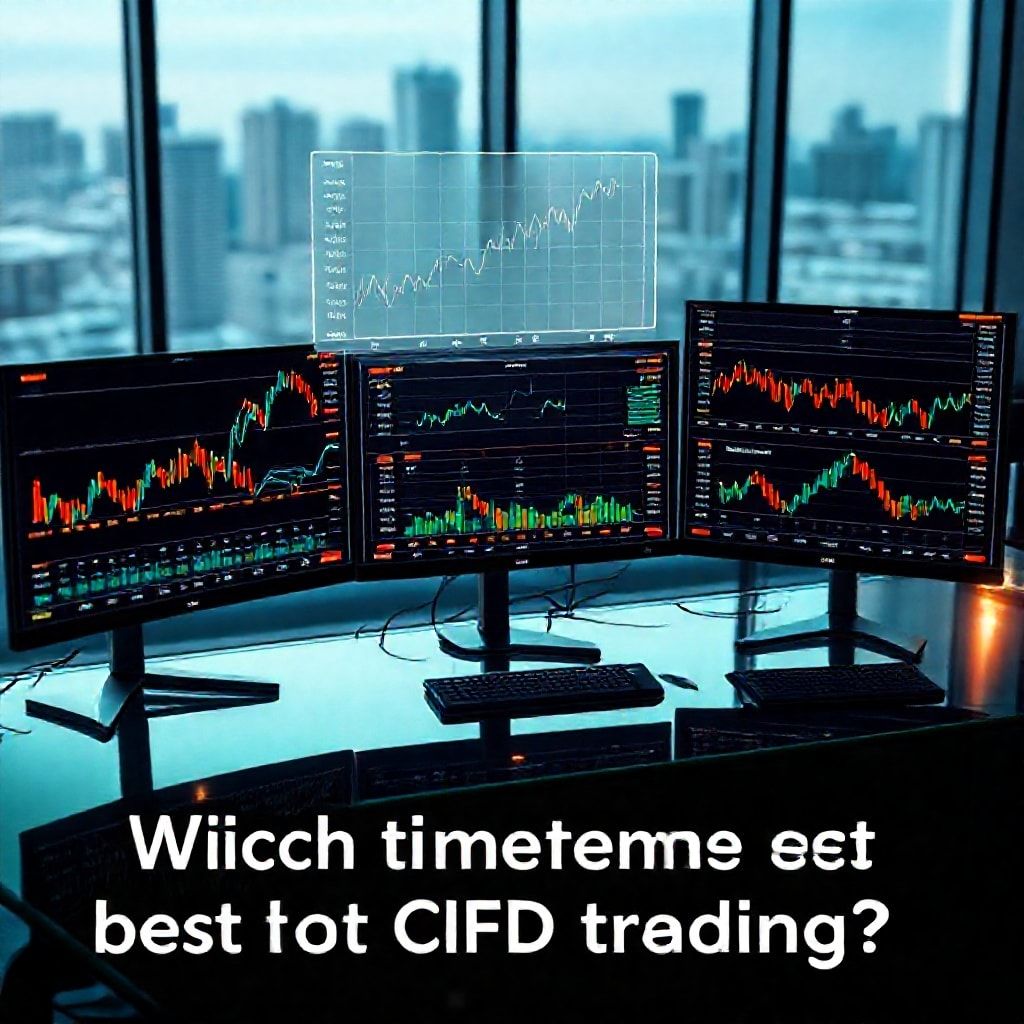Which timeframes are best for CFD trading
Which Timeframes Are Best for CFD Trading
Introduction
If you juggle multiple markets—forex, stocks, crypto, indices, commodities—the question of timeframes isn’t just technical, it’s strategic. The right frames help you spot momentum, avoid noise, and keep risk in check. This piece breaks down how different time horizons fit different styles, what to watch across assets, and how the evolving Web3 and AI-driven landscape might reshape your charting playbook.

Body
Timeframes that fit your trading style
- Short horizons (seconds to minutes) work well for scalpers who want quick, concrete edges. In CFD markets with tight spreads, M1 to M5 charts reveal fast moves in forex spikes, crypto liquidity windows, and streaming quotes. The payoff can be crisp, but the trap is noise—small reversals that trigger over-trading. A disciplined stop and a fixed risk-per-trade help keep this lane sustainable.
- Intraday frames (15 minutes to 4 hours) suit many CFD day traders. These ranges balance clearer trends with manageable noise. You’ll often see clearer swing cues in indices or commodities during session overlaps, plus reliable price fading and breakout setups when liquidity is steady.
- Higher timeframes (daily, weekly) reward patient traders who ride larger cycles. They reduce whipsaw risk and can align with macro drivers across forex and equities. The downside is slower signals, but the advantage is steadier risk management and lower activity costs.
Key points and characteristics by timeframe
- Liquidity and spreads: Shorter frames demand tight spreads; illiquid pairs or tokens can widen costs. Practically, you’ll tolerate slippage better on higher-volume pairs and major indices.
- Noise vs. trend: Lower timeframes are noise-prone; higher frames reveal durable moves. A blend—confirming a signal on a bigger chart with a quick pullback check on a smaller chart—often yields better reliability.
- Risk control: Use fixed risk per trade and scale in gradually. For intraday, consider reducing position size as markets hit choppier zones; for longer horizons, you can tolerate wider stop distances but still cap total exposure per day.
Practical workflow across assets
- Forex and indices: intraday frames (M15-H1) capture session-driven moves; daily charts help with major trend alignment.
- Stocks and commodities: daily to H4 often shows strong swing opportunities around earnings or supply-demand shifts.
- Crypto: higher volatility benefits from aggressive monitoring on M30 to H1, with caution on overnight gaps in less liquid pairs.
- Options and leveraged CFDs: choose timeframes that suit your theta decay and volatility expectations; short-term frames demand frequent risk checks.
Reliability tips and leverage considerations
- Leverage requires discipline: keep risk per trade small, don’t exceed a few percent of equity on a single position, and use fixed stops.
- Chart tools: backtesting on multiple timeframes, layered confirmations (trend, momentum, volatility), and real-time alerts help you stay in rhythm.
- Safety basics: use secure brokers, verify custody of assets, and enable two-factor authentication. In multi-asset CFD trading, diversify exposures rather than piling into a single hot instrument.
DeFi, Web3, and the evolving edge
- The rise of decentralized finance introduces cross-asset access and transparent liquidity pools, but also new risks—smart contract bugs, cross-chain delays, and regulatory ambiguity. Traders are testing hybrid setups: traditional CFD platforms for speed, with DeFi rails for capital-efficient staking or hedges.
- AI and smart contracts are reshaping automation. Smarter order routing, adaptive risk controls, and liquidity-aware execution plans can smooth transitions between timeframes, especially in volatile sessions.
Future trends and slogans
- Expect AI-driven, smart-contract-enabled execution to tailor timeframe choices to your profile—speed for scalpers, drift for swing traders, patience for position traders.
- Slogan ideas: Timeframes that fit your edge; Trade every moment with confidence; Align speed, risk, and conviction across markets.
In sum, there isn’t a single “best” timeframe. The smart approach combines your style with market structure, adapts to each asset’s quirks, and leverages evolving tech to keep you on a steady, evidence-based path.